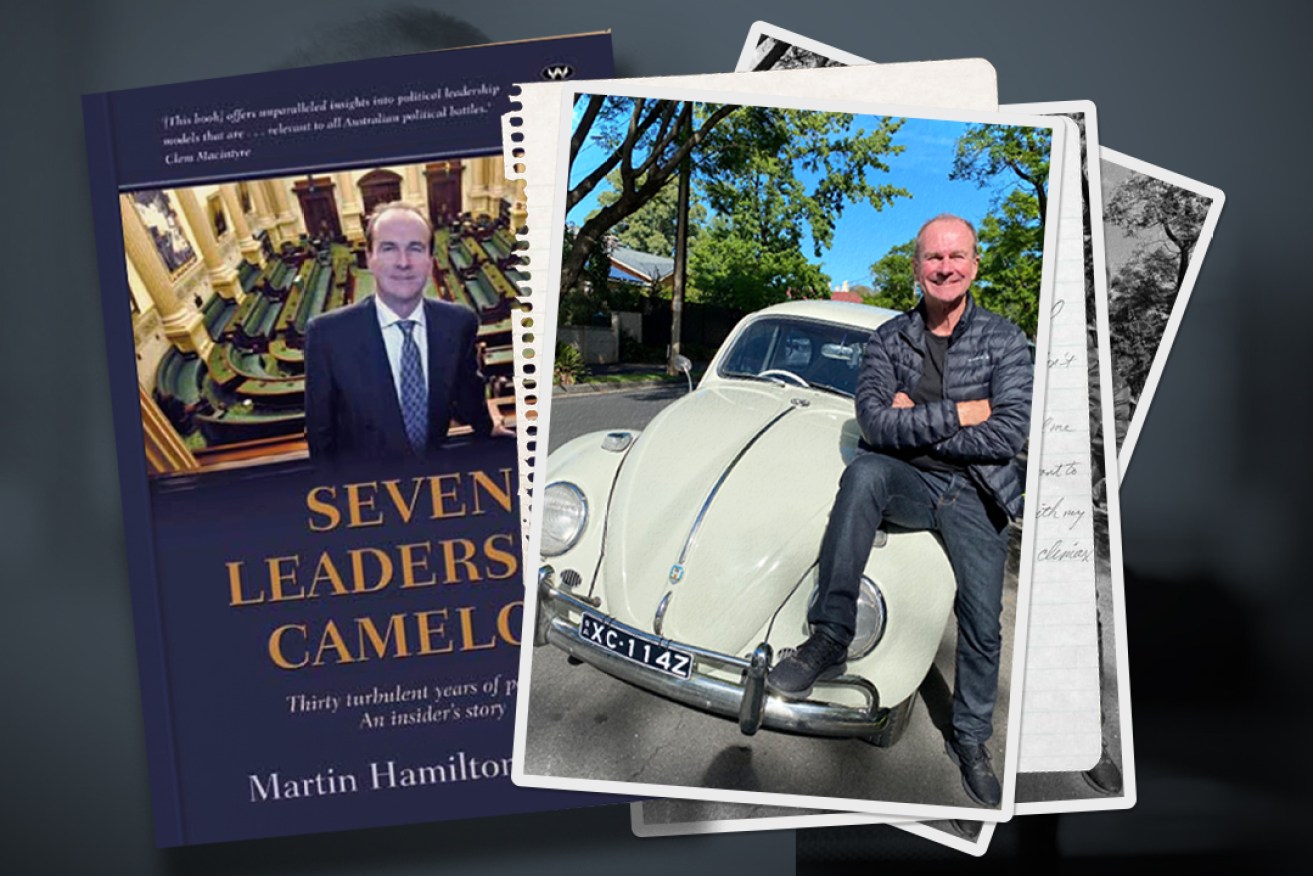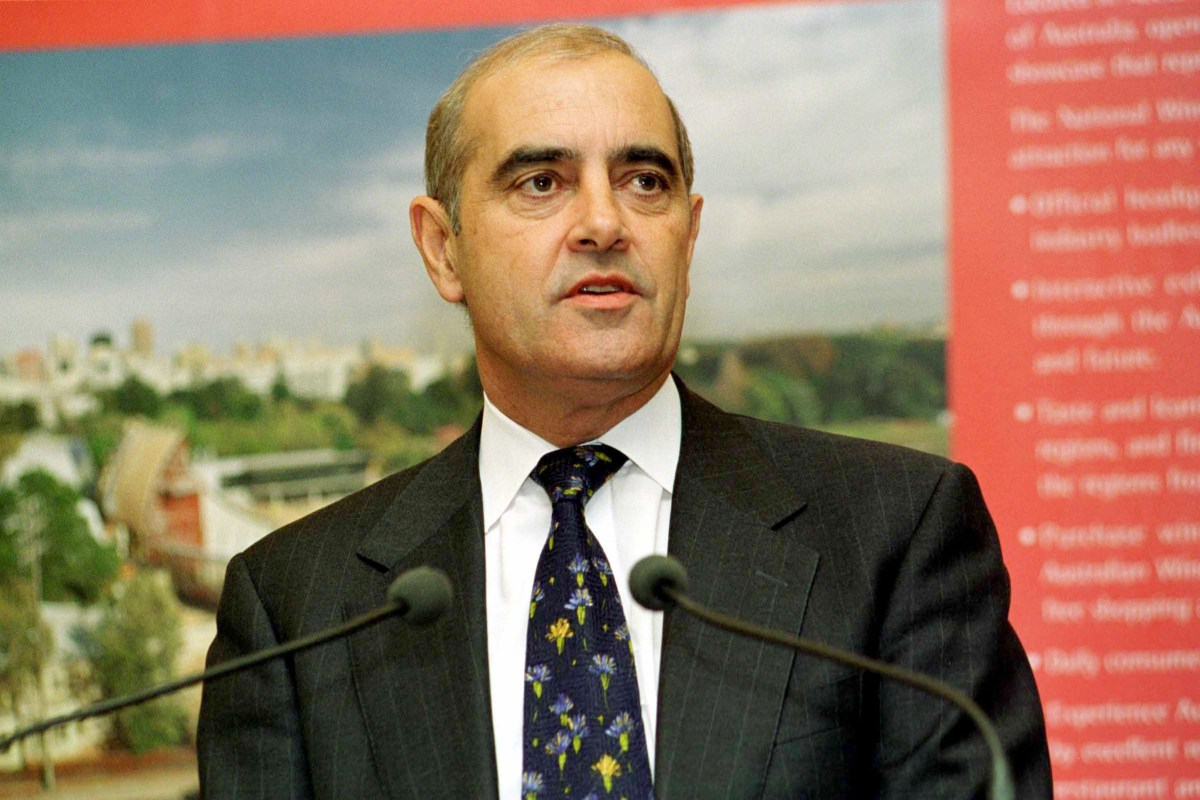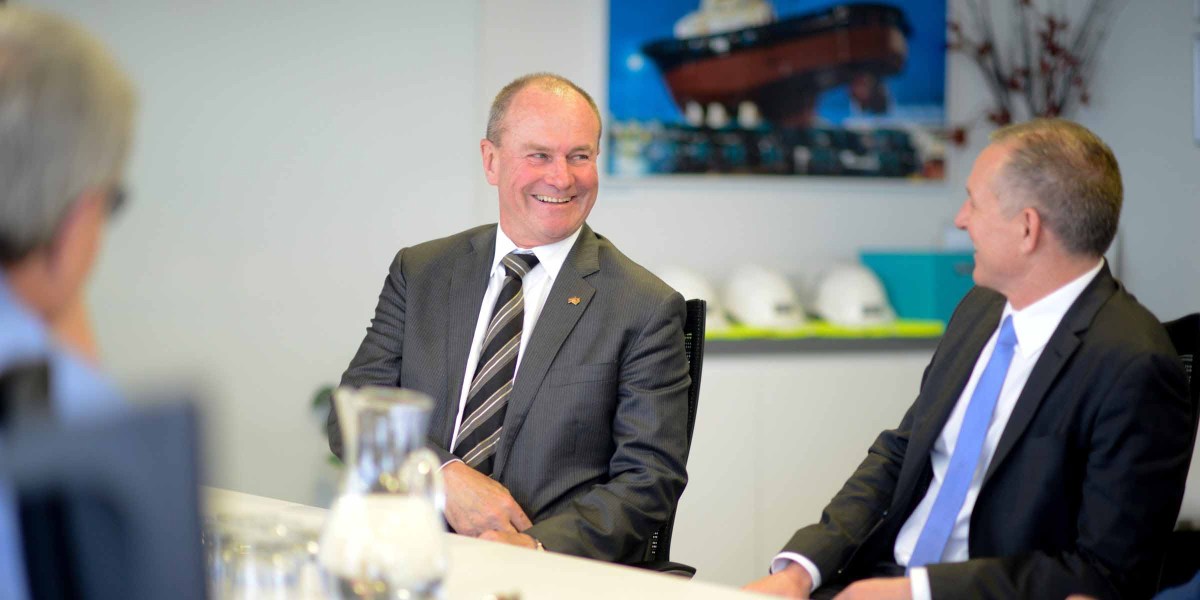How SA Liberals could have avoided a fatal mistake
Martin Hamilton-Smith’s political biography is a valuable addition to our understanding of South Australian politics, and contains new information about one of the most controversial episodes in recent state history, writes Matthew Abraham.


Martin Hamilton-Smith's political biography and pictured with his VW. Beetle photo: Matthew Abraham
The Man Who Nearly Saved ETSA didn’t arrive on a white horse.
Instead, Martin Hamilton-Smith rocked up in his cream, 1968 VW Beetle 1300.
While the V-Dub is in motor museum condition, right down to the small heating knob located on the floor next to the gear stick, it’s been pimped with mag wheels, dual exhausts and the engine block’s been bored out to 1500cc for extra grunt.
The little car strikes an incongruous note for the former elite Army officer who turned to politics, but that’s the point. It’s a one-off, just like its owner, an interesting and unflappable man who was dented but never broken by his journey along the shabby, pot-holed road that is South Australian politics.
He was personally home-delivering an advance review copy of his book Seven Leaders in Camelot, billed as an insider’s story of “thirty turbulent years of politics”.
It could just as well have been described as an insider’s story of 30 turbulent years of utter bastardry, back-stabbing, dirty double-dealing, self-sabotage, inbreeding, nepotism, own goals, strategic lunacy and generally dopey behaviour by the SA Liberal Party, but there’s only so many words a publisher can fit in bold type on a book cover.
He was to quickly discover politics is a very different battlefield. The normal rules of war do not apply. Inside the SA Liberals, the enemy was within and the contests were bloody and chaotic
For the newbies to all this, take a deep breath.
Hamilton-Smith was a Housing Trust kid, went to Marion High, served as a commanding officer in the Army’s tough Special Air Services Regiment, entered politics in the seat of Waite in 1997, was a Minister in the Kerin Liberal Government, was elected Opposition Leader, quit unnecessarily over the so-called “dodgy documents” affair and then left the Liberals to sit as an independent MP.
In a bombshell move, he then leapt out of the chopper completely to serve as a minister in the Weatherill Labor Government. This saw him hypocritically branded a “rat” and a “traitor” by the Liberals, a party crowded with rats and traitors.
Sure, he accepted an invitation from the same Labor Party that had so often shamefully mocked him as “Major Marty” or the mummy’s boy Dad’s Army character “Private Pike”.
He entered politics at the shambolic 1997 election that saw John Olsen blow a record majority to cling to power in minority government – the only new entrant to the Liberals on election night or during Olsen’s entire leadership. He quit as an MP, in the face of certain defeat, shortly before the 2018 election.
That’s the Readers Digest version, but it’ll get you started.
He decided his own political career wouldn’t sustain a stand-alone book, so instead has chronicled his experience of the “Seven Leaders in Camelot” from 1993 to 2022.
This seems a strange call, because Hamilton-Smith is every bit as interesting as the leaders he either served with or faced across the House of Assembly carpet – Liberal Premiers Dean Brown, John Olsen, Rob Kerin and Steven Marshall and Labor Premiers Mike Rann and Jay Weatherill.

Then Premier John Olsen in 2001 – a year before the Liberals entered the electoral wilderness in SA. Photo: AAP/Carlo Irlitti
But that’s only six. Who’s Number Seven in his Camelot? It’s Hamilton-Smith.
He describes himself as the least successful because he never became Premier, and that’s his call.
He was, however, without question the best-trained leader the Liberal Party has ever had, in opposition or government.
The Australian Army has a brilliant track record of training its soldiers, from the lowliest sapper to the highest ranks. Few armies, few corporations do it better.
As a Lieutenant-Colonel and SAS commando, Hamilton-Smith entered politics with this Duntroon military college training behind him, solid academic credentials and active service fighting terrorism.
But he was to quickly discover politics is a very different battlefield. The normal rules of war do not apply. Inside the SA Liberals, the enemy was within and the contests were bloody and chaotic.
The book holds few surprises for a journalist who traversed this muddy terrain for much of the 30 years in and out of SA’s political foxholes.
But one passage came as a bolt from the blue – how Martin Hamilton-Smith nearly saved ETSA.
He reveals the Liberal party room had a serious, and justified, attack of the collywobbles when briefed on Premier Olsen’s disastrous decision to trash a clear election promise not to privatise the Electricity Trust of SA.
Flogging off the state’s most trusted household brand, after promising not to, remains a breathtaking breach of trust with voters.
You can argue they’ve never forgiven nor forgotten it.
Hamilton-Smith says while he accepted assurances from Olsen and his Treasurer Rob Lucas about the sale, he held concerns about the premier’s “broken promise and the optics and value of a trade sale to foreign owners”.
“After consulting with the private sector, I proposed to Olsen, Lucas and others that we consider a public float rather than a trade sale,” he writes.
He proposed a float similar to the Howard Liberal Government’s Telstra float, where one-third was sold initially, then a further 16 per cent to Australian customers, leaving the Commonwealth with a majority 51 per cent shareholding.
When a third tranche was sold years later, the remainder was put into the Future Fund to meet public service superannuation liabilities.
Hamilton-Smith’s ETSA plan was for the SA Government to retain 51 per cent ownership, with the first right of refusal for the 49 per cent going to South Australians who were ETSA businesses and “mum and dad investors”.
This would keep the assets in a different form of public ownership, and a case for selling the second tranche held by the government could be taken to the 2002 election.
The idea went down like a cup of cold sick with the Olsen brains trust.
“In a short response Olsen told me it was important to move quickly and to optimise the price,” Hamilton -Smith says. “He did not think my proposal allowed for either. It was clear that the path we were to tread had already been decided. Cabinet had made up its mind and the process was not open to negotiation.”
Well, John Olsen the politician was always a man in a hurry.

Martin Hamilton-Smith with then Premier Jay Weatherill at ASC in 2015. InDaily image
Hamilton-Smith correctly describes this as a lost opportunity and a fatal mistake as ultimately ETSA was “sold at a discount price in a fire sale”.
Privatisation of state-owned assets remains a hot-button issue to this day, because it is linked in the minds of voters with higher prices and loss of control.
It emerged as a lethal backdrop in last week’s NSW election. Incoming Labor Premier Chris Minns flagged he’d consider buying back the privatised, coal-fired Earing Power Station and keep it running beyond its mooted closure in 2025, to maintain baseload power for NSW.
And Victorian Premier Dan Andrews promised during his winning election campaign last year to revive the State Electricity Commission and build state-owned, renewable power generation.
Yet almost 25 years after selling ETSA, the same Liberal Treasurer, Rob Lucas, again set about privatising state-owned power assets almost immediately after the Liberals won the 2018 election.
On August 19, 2019, the oncer Marshall Government sold or leased the thumping big, twin diesel-gas generators that had been purchased by the Weatherill Government to keep the lights on if SA faced another rolling blackout – even though the gennies had begun delivering millions in windfall power market gains to taxpayers.
When you’re on a good thing, as they say.
The Hamilton-Smith book is a valuable addition to a threadbare library of works exploring SA politics, written by those who helped shape our society.
It begins with a cracking prologue about the time he had to parachute into the sea after an engine failure onboard the Iroquois UH1H helicopter carrying him on a training exercise off Perth.
“I hit the water at speed,” he writes. “Nothing went as I had hoped. The parachute harness leg snap did not release.”
Tangled in metres of nylon line, his life-saving parachute was drowning him.
“Dying by drowning was, I could see, not painful,” he writes. “I was quite calm… I saw a light, and then darkness, and then light again.
“I may have been looking into the sun through water or it may have been something else. Occasionally I would bob to the surface, then light again, perhaps some air, then down again.”
After several rescue attempts, he was dragged almost lifeless from the water, close to cardiac arrest, and ferried by ambulance to hospital.
Martin Hamilton-Smith saw the light. It’s a shame the same can’t be said for so many of the other characters in Camelot.
Seven Leaders in Camelot is published by Wakefield Press.
Matthew Abraham’s political column is published on Fridays. Matthew can be found on Twitter as @kevcorduroy. It’s a long story.




